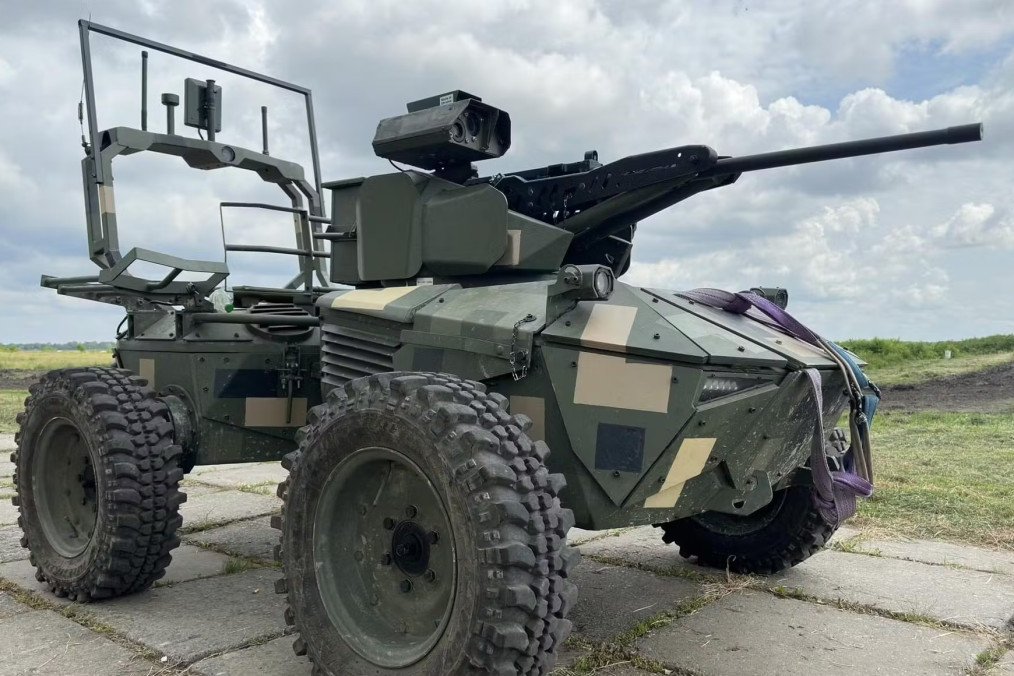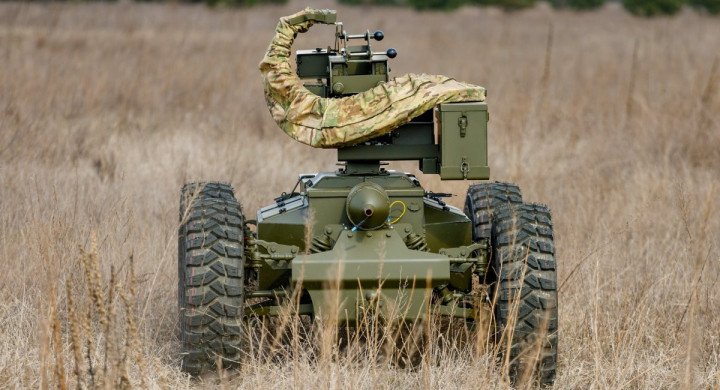- Category
- Latest news
Ukrainian Ground Drones Use Fiber Optics to Bypass Russian Jamming, Extending Range Beyond 20 km

Recent tests conducted by the Brave1 defense tech cluster with the assistance of Deputy Commander-in-Chief of the Armed Forces of Ukraine, Brigadier General Andriy Lebedenko, have showcased the potential of fiber optic-based FPV (First-Person View) drones and ground robotic complexes, underscoring notable advantages and unforeseen drawbacks, according to Defense Express on April 2.
The drones showed notable advancements: while their range was previously limited to 5-10 km, recent tests have successfully demonstrated capabilities to strike targets at distances exceeding 20 km.
These unmanned systems promise to enhance strike, reconnaissance, and defensive operations, offering improved communication and operational effectiveness over long distances.
“Fiber optics is a game-changer in the battle for communication and electronic warfare, as it provides stable communication unaffected by EW tools. We are very interested in implementing fiber optics so our GRCs can operate at greater distances and help us destroy the enemy more effectively,” stated Captain Oleksandr Yabchanka, head of the robotic systems service at the “Wolves Da Vinci” Battalion.
The tests involved over 15 UAV manufacturers and seven producers of ground robotic platforms, with a 20 km route established for the FPV drones.
The drones are immune to electronic warfare, operate without radio emissions to avoid detection, and provide stable video transmission over long distances. They are also unaffected by radio horizon limitations, ensuring reliable performance in combat according to Defense Express.
One of the key challenges with ground-based drones is the limitation of communication. Obstacles like terrain, trees, and buildings can interfere with radio signals, and enemy electronic warfare can disrupt operations, potentially resulting in the loss of expensive equipment.

Additionally, the radio range of these drones is relatively short, limiting their effectiveness without additional equipment like repeaters.
Fiber optics, however, offer a solution to these communication issues. Unlike radio systems, fiber optics are immune to signal interference from environmental factors and enemy jamming.
However, they come with their own set of challenges, particularly in terms of weight. FPV drones, which have limited payload capacity, often need to reduce the weight of their warheads to accommodate the fiber optic cables. For instance, 10 km of fiber optic cable weighs approximately 2.1 kg.
Contrary to previous concerns, the durability of fiber optics has been proven to be reliable, with the breaking force of thin optical fibers reaching 30-40 kg.
While this ensures durability, the weight factor remains a critical consideration for unmanned aerial systems.
For ground robotic complexes, which can carry much larger payloads, fiber optics can be used over significantly greater distances. However, signal transmission remains limited, and in cases of cable damage, alternative measures like antennas can be used to maintain the connection, Defense Express stated.
The integration of fiber optics into unmanned systems provides high-quality, stable visuals over considerable distances.
This innovation is expected to revolutionize military operations, including the ability to set ambushes deep within enemy territory with reduced risks to personnel. As unmanned systems evolve, the use of fiber optics is becoming increasingly integral to military strategies, offering clear advantages in both communication and operational effectiveness.
In related news, Ukraine’s Unmanned Systems Forces are recruiting for the newly established “Harpies” Women’s Unit, which will focus on unmanned and robotic systems, the Ukrainian Armed Forces.
-bc56044d9363e1eb7fcc92ad8b70fccd.jpeg)
-554f0711f15a880af68b2550a739eee4.jpg)






